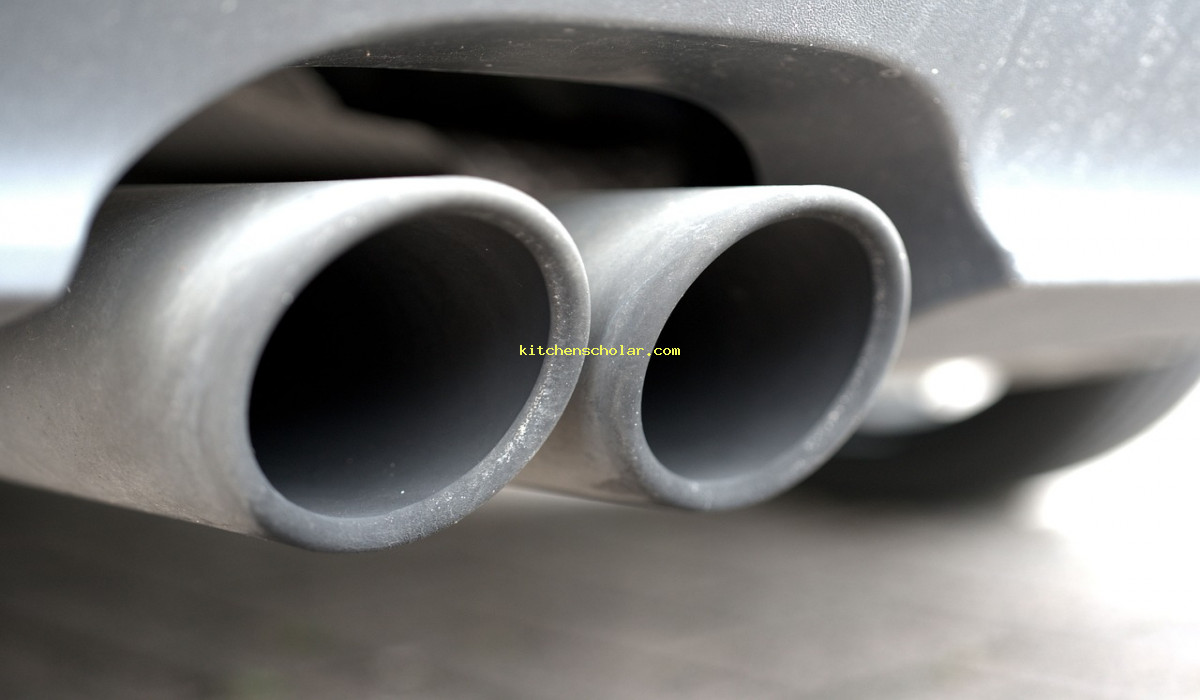10 Simple Tips to Clean and Maintain Your Kitchen Exhaust Hood. Improve your cooking experience with a kitchen exhaust hood! Say goodbye to smoke, steam, and unwanted odors in your kitchen. Our range of hoods will keep your kitchen clean and fresh. Enjoy your meals without any distractions. Choose from our variety of stylish and efficient options. Say hello to hassle-free cooking!
Clean and Maintain Your Kitchen Exhaust Hood
10 Simple Tips to Clean and Maintain Your Kitchen Exhaust Hood
10 Simple Tips to Clean and Maintain Your Kitchen Exhaust Hood. will keep your 10 Simple Tips to Clean and Maintain Your Kitchen Exhaust Hood
The Importance of a Kitchen Exhaust Hood
Kitchen exhaust hoods are essential for any modern kitchen. They play a crucial role in removing harmful fumes, odors, and grease generated during cooking. These powerful ventilation systems not only keep your kitchen smelling fresh and clean but also provide a safe and healthy cooking environment.
What is a Kitchen Exhaust Hood?
Kitchen exhaust hood, also known as range hood, is a device that is installed above your cooking range or stove. It is designed to capture smoke, fumes, and grease that are produced during cooking and expel it outside or filter it and recirculate the air back into the kitchen.
How Does a Kitchen Exhaust Hood Work?
A kitchen exhaust hood consists of a fan, filters, and a duct system. When you turn on your stove or cooktop, the fan in the exhaust hood starts drawing in air and pollutants through the filters. The filters capture grease particles and other impurities in the air while the fan pushes the air out through the duct system.
The Benefits of a Kitchen Exhaust Hood
Apart from keeping your kitchen smelling fresh and clean, a kitchen exhaust hood offers many other benefits:
1. Improved Air Quality
Cooking involves creating large amounts of smoke and fumes which can be harmful if inhaled continuously. A kitchen exhaust hood removes these pollutants from the air, improving the overall air quality in your kitchen.
2. Reduced Risk of Fire
Restaurants and commercial kitchens are required by law to have a kitchen exhaust hood because of the high risk of grease fires. A kitchen exhaust hood effectively removes grease particles from the air, reducing the risk of fire.
3. Clean and Healthy Kitchen
Without a kitchen exhaust hood, grease and other particles can accumulate on surfaces and appliances, creating a breeding ground for bacteria and germs. A kitchen exhaust hood helps to keep your kitchen clean and hygienic.
4. Protection for Your Cabinets and Walls
Steam and grease generated during cooking can cause discoloration and moisture damage to your cabinets and walls. A kitchen exhaust hood helps to protect your kitchen from such damage, keeping it looking clean and fresh.
5. Increased Energy Efficiency
When cooking, your exhaust hood helps to remove excess heat, moisture, and smoke from your kitchen. This helps to lower your air conditioning bill by reducing the load on your HVAC system.
6. Better Lighting
Many kitchen exhaust hoods come with built-in lights that illuminate your cooking surface. This can be especially helpful when working with low lighting or when using a gas cooktop.
7. Increased Property Value
A kitchen exhaust hood is considered a must-have by many home buyers, especially in high-end kitchens. It adds value to your property and makes it easier to sell in the future.

Types of Kitchen Exhaust Hoods
There are various types of kitchen exhaust hoods available in the market. They can be broadly classified into two categories – ducted and ductless.
Ducted Kitchen Exhaust Hoods
Ducted kitchen exhaust hoods, also known as vented or external hoods, work by expelling the air and pollutants outside through a duct system. These are considered more effective than ductless hoods as they remove the pollutants from the kitchen completely.
Ductless Kitchen Exhaust Hoods
Ductless kitchen exhaust hoods, also known as recirculating hoods, filter the air and recirculate it back into the kitchen. These hoods are less expensive to install as they do not require a duct system, but they are not as effective as ducted hoods in removing pollutants.
Under Cabinet or Wall Mounted Hoods
These hoods are mounted underneath a cabinet or onto a wall above the cooking range. They are a popular choice for smaller kitchens as they don’t take up too much space.
Island Hoods
Island hoods are suspended from the ceiling over an island or peninsula cooktop. These are the perfect choice for larger kitchens with a cooking island as they provide better coverage and ventilation.
Wall Chimney Hoods
Wall chimney hoods are mounted onto the wall and are suitable for kitchens with a standard range or cooktop. These hoods come with a chimney that extends to the ceiling for better ventilation.
Professional Range Hoods
Professional range hoods are designed for commercial kitchens and high-end residential kitchens. They have a powerful ventilation system, larger size, and sleek design to handle heavy-duty cooking.
Under Counter Hood Inserts
These are built-in kitchen exhaust hoods that are installed under a cabinet or shelf. They offer a discreet option for smaller kitchens and can be easily hidden out of sight.
Filtration System Options
Apart from the type of hood, you also have the option to choose from various filtration systems such as baffle or mesh filters, charcoal filters, and hybrid filters. It is important to consult a professional to determine which filtration system is the most suitable for your kitchen.
Customization Options
Kitchen exhaust hoods come in a variety of shapes, sizes, and materials. You can choose from stainless steel, glass, copper, and a variety of other materials to match your kitchen’s design and aesthetic.
Maintenance Tips for Kitchen Exhaust Hoods
Proper maintenance of your kitchen exhaust hood is crucial to ensure its efficiency and longevity. Here are a few tips to keep in mind:
– Clean or replace filters regularly to remove grease and other buildup.
– Wipe down the exterior of the hood with a mild detergent to keep it looking clean and shiny.
– Check the ducts and fan for any blockage regularly to ensure proper ventilation.
– Hire a professional to clean your entire kitchen exhaust system every 6 months to a year, depending on your cooking frequency and type of hood.
Final Thoughts
A kitchen exhaust hood is an essential kitchen appliance that provides many benefits and protects your health and home. It is important to choose the right type and size of kitchen exhaust hood for your kitchen and to maintain it properly to ensure its efficiency. Consult a professional to help you find the perfect kitchen exhaust hood for your needs.
10 Simple Tips to Clean and Maintain Your Kitchen Exhaust Hood
Improve your cooking experience with a kitchen exhaust hood! Say goodbye to smoke, steam, and unwanted odors in your kitchen. Our range of hoods will keep your kitchen clean and fresh. Enjoy your meals without any distractions. Choose from our variety of stylish and efficient options. Say hello to hassle-free cooking!. Exhaust 10 Simple Tips to Clean and Maintain Your Kitchen Exhaust Hood

Kitchen Exhaust Hoods: The Unsung Heroes of Your Kitchen
Whether you’re a professional cook or an amateur chef, your kitchen exhaust hood is likely a crucial part of your kitchen. The unsung hero of your cooking space, this vital appliance performs an important function in maintaining a clean and healthy environment. In this comprehensive article, we’ll explore everything you need to know about kitchen exhaust hoodsClean and Maintain Your Kitchen Exhaust Hood, including their importance, types, installation, maintenance, and more.
The Importance of Kitchen Exhaust Hoods
Kitchen exhaust hoods play a crucial role in removing pollutants, odors, and excess heat from your kitchen. Not only does this improve the overall air quality in your homeClean and Maintain Your Kitchen Exhaust Hood, but it also prevents the buildup of grease and other cooking debris on your kitchen surfaces. By removing these impurities, kitchen exhaust hoods create a healthier and safer environment for both you and your family.
The Types of Kitchen Exhaust Hoods
There are several types of kitchen exhaust hoods availableClean and Maintain Your Kitchen Exhaust Hood, each with its own unique features and functionsClean and Maintain Your Kitchen Exhaust Hood. The most common types are wall-mounted, under-cabinet, island, and downdraft exhaust hoods.
Wall-mounted exhaust hoods are attached to the wall above the cooking surface and are typically found in traditional kitchens. Under-cabinet exhaust hoods are installed under the cabinets and are popular in smaller kitchens where space is limited. Island exhaust hoods are placed above an island cooktop, while downdraft exhaust hoods are installed near the cooktop and pull air down and out through the floor.
Installation of Kitchen Exhaust Hoods
Proper installation of your kitchen exhaust hood is crucial for it to function effectively. Before installation, make sure to measure the size of your cooktop and choose a hood that is slightly larger to ensure proper coverage. You should also consider the height of your ceiling and the placement of your ductwork to determine the best location for your hood.
During installationClean and Maintain Your Kitchen Exhaust Hood, it’s important to follow the manufacturer’s instructions carefully and seek the help of a professional if neededClean and Maintain Your Kitchen Exhaust Hood. Improper installation can result in a faulty unit and potential safety hazards.
Maintenance of Kitchen Exhaust Hoods
Regular maintenance of your kitchen exhaust hood is essential to keep it running smoothly and effectively. The first step is to regularly clean the exterior of the hood and its filters. Grease and cooking residue can accumulate on the surface of the hood and impair its functionClean and Maintain Your Kitchen Exhaust Hood, so it’s important to clean it at least once a week.
You should also clean the filters once every two to three monthsClean and Maintain Your Kitchen Exhaust Hood, or more frequently if you cook regularlyClean and Maintain Your Kitchen Exhaust Hood. For a more thorough clean, remove the filters and soak them in warm, soapy water. You can also run them through the dishwasher for a deep clean. Just make sure to let them dry fully before reinstalling them.
Choosing the Right Kitchen Exhaust Hood
With various types and models available in the market, choosing the right kitchen exhaust hood can be challenging. There are a few key factors to consider before making your purchaseClean and Maintain Your Kitchen Exhaust Hood, including size, suction power, and noise level.
Clean and Maintain Your Kitchen Exhaust Hood, make sure to choose a hood that is appropriately sized for your cooktop. The hood should extend slightly beyond the edges of the cooktop to ensure maximum coverage. Additionally, consider the suction power of the hood. A higher suction power can be beneficial for heavy-duty cooking, while a lower power may suffice for daily meal preparations.
It’s also important to consider the noise level of the hoodClean and Maintain Your Kitchen Exhaust Hood. Some exhaust hoods can be loud and disruptive, especially if your kitchen is open to your living space. Look for models with lower decibels for a quieter cooking experience.
Common Problems with Kitchen Exhaust Hoods
While kitchen exhaust hoods are essential for maintaining a clean and safe kitchen, they may experience some common problems over time. The most frequent issues include a humming or vibrating motor, clogged filters, or a faulty fan.
If your exhaust hood is making unusual noises, check for debris that may be stuck in the fan or motor. You can also try cleaning or replacing the filters if they appear clogged. However, if these steps do not resolve the issue, it may be time to call a professional for repairs or replacement.
Additional Tips for Using Your Kitchen Exhaust Hood
Here are a few additional tips to keep in mind when using your kitchen exhaust hood:
- – Make sure to turn on your hood before cooking to allow it to properly capture any impurities.
- – Always run your hood for a few minutes after cooking to clear any lingering pollutants or odors.
- – Avoid using harsh chemicals to clean your hood as they can damage the filters and motor.
- – If you have a gas cooktopClean and Maintain Your Kitchen Exhaust Hood, make sure to run your hood on a higher setting to adequately remove the excess heat and fumes.
In Conclusion
Your kitchen exhaust hood is a vital component of your cooking space and plays a critical role in maintaining a clean and safe environment. By choosing the right type, properly installing and maintaining iClean and Maintain Your Kitchen Exhaust Hoodt, and following a few extra tips, you can ensure that your kitchen exhaust hood is functioning effectively and efficiently. So next time you’re whipping up a delicious meal, remember to turn on your trusty kitchen exhaust hood for a healthier and more enjoyable cooking experience. 10 Simple Tips to Clean and Maintain Your Kitchen Exhaust Hood

10 Simple Tips to Clean and Maintain Your Kitchen Exhaust Hood
How often should kitchen exhaust hood be cleaned?
Your kitchen exhaust hood should be cleaned at least once every three months to prevent buildup of grease and other debrisClean and Maintain Your Kitchen Exhaust Hood, which can pose a fire hazard.
What are the benefits of a kitchen exhaust hood?
A kitchen exhaust hood helps remove smoke, steam, and cooking odors from your kitchen, keeping the air cleaner and preventing grease buildup on surfacesClean and Maintain Your Kitchen Exhaust Hood. It also helps prevent the growth of bacteria and mold.
What type of filter should I use for my kitchen exhaust hood?
Some common types of filters for kitchen exhaust hoods include baffle, mesh, and charcoal filters. The type you choose will depend on your specific needs and the type of cooking you do.
How loud should a kitchen exhaust hood be?
It is recommended to choose a kitchen exhaust hood with a noise level of no more than 7 sones on its highest setting. This will ensure that the noise is not too disruptive in your kitchen.
Should kitchen exhaust hood be vented outside?
Yes, it is recommended to vent your kitchen exhaust hood to the outdoors rather than recirculating the air back into your kitchen. Outdoor venting helps remove pollutants and odors from your homeClean and Maintain Your Kitchen Exhaust Hood.
Can I install a kitchen exhaust hood myself?
It is recommended to hire a professional for the installation of your kitchen exhaust hood, especially if you need to make any modifications to your kitchen or have limited experience with electrical and ductwork.
How do I determine the correct size for a kitchen exhaust hood?
The size of your kitchen exhaust hood should be based on the size of your stove or cooking surface. A general rule of thumb is to have 1 CFM (cubic feet per minute) of ventilation for every 100 BTUs of cooking power.
What is the best way to clean a kitchen exhaust hood?
It is recommended to use a degreaser or a mixture of hot water and dish soap to clean your kitchen exhaust hood. Be sure to clean the filters, fan, and other parts of the hood regularly to prevent buildup of grease and other debris.
Do I need a permit to install a kitchen exhaust hood?
In most cases, you will need a permit to install a kitchen exhaust hood. It is important to check with your local building department before beginning the installation process to ensure you are following all necessary regulations.
Can I use my kitchen exhaust hood without ductwork?
While it is possible to use a kitchen exhaust hood without ductwork, it is not recommended. Without proper ventilation to the outdoors, grease and other particles can accumulate in your kitchen and pose a fire hazard. 10 Simple Tips to Clean and Maintain Your Kitchen Exhaust Hood
